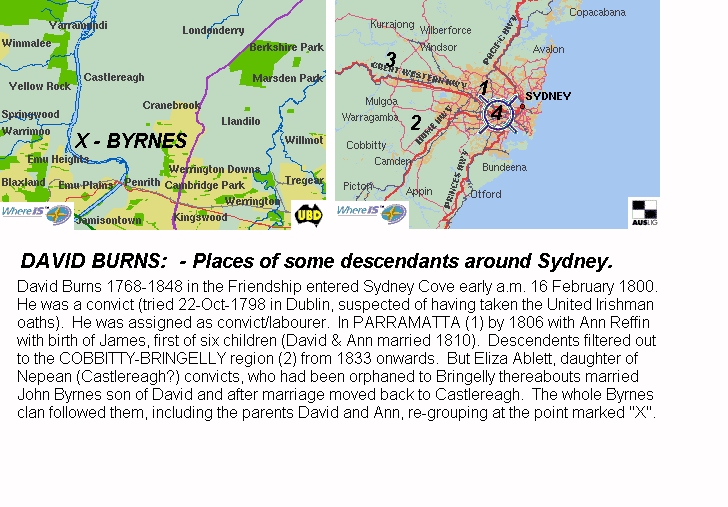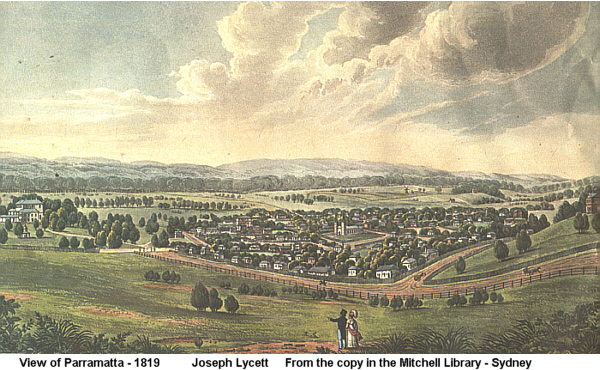COMMEMORATION - ANN REFFIN
(1783-1839)
ARRIVED IN SYDNEY 200 YEARS AGO
If you would like fuller information (and perhaps a CD, although this is not ready yet) marking the 2004 commemoration of Ann Reffin's arrival in Australia, please contact:
[email protected] ...Ann Byrnes
OR [email protected] ...John Byrnes (Work - Ph. 02 9901 8789) ... or
[email protected] (Home)
*** We'd also like your thoughts regarding a Byrnes Bi-centennary for 2006 ***
The commemoration was arranged by the Byrnes family of Strathfield. Ann and John Byrnes hosted the meeting at Castlereagh in the historic Wesleyan/Methodist precinct that many of Ann's descendants are connected with. At the same time, Juliet (Ann and John's daughter) travelled to where Ann Reffin was born in England (photos below).
Re the meeting in remembrance of Ann at an old church hall (former Wesleyan schoolhouse) at Upper Castlereagh:
LINK1-
Castlereagh looking west towards the Blue Mountains
LINK2
- Finding the Upper Castlereagh Methodist Church & Cemetery
To see the site where we met click on "Finding the Upper Castlereagh Methodist Church & Cemetery" to link to Penrith City Council's
"Castlereagh" site at http://www.penrithcity.nsw.gov.au/Lib/LocalSuburbs/Castlereagh.htm and then
scroll down to near end of the page to find photo labelled "Upper Castlereagh
Methodist Church & Cemetery".
We met in the small small hall shown in this photo (http://www.penrithcity.nsw.gov.au/Lib/LocalSuburbs/Images/castlereaghMethodist.jpg).
Between 20 and 30 people connected with Ann Reffin attended but we didn't get the detail of who all of them were in the attendance book.
Quite possibly this was the first time a group had met with the specific purpose of talking about, or remembering, or honouring, Ann Reffin (who had long become something of a 'forgotten woman') for well over a hundred years.
Ann Reffin was remembered simultaneously on two continents in June 2004; both in the land of her birth with Julie Byrnes visited Walton on the Wolds and took photographs (some below), and by the 20-30 meeting at Castlereagh in the land of her deportation/transportation, which became the new land for us ~ her many descendants.
Of Ann's six children, the first (James, married to Harriet) had no children. One of the others had no children who survived long. The other four children in turn had many more, and so four lines of family springing from Ann Reffin developed in Australia. Attendees from all four ongoing lines of Ann's children attended the meeting, and we had several talks on family history of those line. One of the attendees, Sandra Hindmarsh, had just completed a book on one of the lines (Alfred Roy and Constance Byrnes) from Ann Reffin's son Samuel. Sandra brought along a preview (manuscript) of the book, which will be available in hard copy or on CD.
Presentations +/- displays were given on the Jacksons (John Jackson, son of Ann Byrnes, the first daughter of Ann Reffin, held land immediately across the road from where the meeting was held, and sold land to the government for the small public schoolhouse which superceeded the Wesleyan one); on the Wilkinsons and others descended from Esther; on the William Taylor branch via Samuel's second wife Eliza Gorman (plus KS informed us of tracing the Gorman's back in England); and on the Alfred Roy branch via Samuel's first wife Eliza Lewis. There was speculation on which wife is buried with Samuel, and where the other one of the first two wives might be (in the Alfred Roy and Constance plot?). Church records from the appropriate time seem to be missing .. and Pat Curry informed us that she had recently noted an item in the Nepean Times that referred to loss of records in one of the floods (which might be the explanation?).
Sandra's book about Alfred Roy Byrnes' descendants when it appears will be the third substantial publication on our family and its links to Castlreagh, adding to Pat Curry's book "A Byrnes Book - 1800-2000" (2003), and Merle Kavanagh's book "John Lees the Chapel Builder" (1987).
Where we met is on the 'sacred' or 'devoted' acre that John Lees gave to the Wesleyan church after he was visited by a Wesleyan missionary and was instantly converted (he'd been having a bad time with drinking and his continued ownership of his farm was in jeopardy). The 'sacred acre' precinct today contains an old chapel, old schoolhouse and graveyard, and a more recent (1873) small public school, and some modern cabins people can stay at. It will escape the conversion of Castlereagh into Lakes by sand quarrying, and may in the not too distant future become an island.
This is the place where a 'bread and butter' church (the current church) was made possible by funds raised through Wesleyan revivalism that started with Tea Meetings: "It was arranged that a Tea Meeting should be held - the first I believe that was ever held in New South Wales - to which the public should be invited without money or ticket. This was held on January 6th, 1841. It was to serve the double purpose of a social meeting and a love feast." [That is as recorded by James Rutledge who was brought to the place in November 1840 as lay preacher and first schoolteacher for the old schoolhouse where we met - The building is weatherboard and has been kept well painted, and remains in a very good state of repair to this day.]
Although the Tea Meetings were, according to Rutledge, supposedly free social meetings and love feasts, those attending must have been moved to make contributions(?). For after two and twenty Tea Meetings the current 'new' church was built in 1847 (replacing a wooden chapel). The Tea Meetings were run by four ladies, Mrs Gorman, youngest daughter of Mr Lees (the donor of the site), Mrs Lees who was wife of John Lees Jnr., Mrs Stanton, and Mrs Harriet Byrnes who was the wife of James Byrnes (Ann Reffin's first child). Harriet, who was possibly a streetwalker transported for robbing a client, had been raised a Methodist in Lincolnshire, near Epworth. Harriet seems a likely link who drew the Castlereagh Byrnes family into the orbit of the Lees' Wesleyanism at the sacred acre; and hence also for some of the family subsequently into the Salvation Army (which developed from Methodism). And afterwards, another son of Ann Reffin, Samuel, married Eliza Gorman (in 1854), one of Lees' descendants. During the 1800s the families living at Castlereagh became very intertwined by marriages.
The old schoolhouse suited us well for the 'Reffin-200' commemorative meeting. It is a very agreeable place for history meetings; had an overhead projector, an ample kitchen and everything else that might be needed for a meeting. Our ancestors or early relatives (e.g. Samuel Byrnes and wife, Roy and Constance Byrnes, Ann and John Jackson, Lees etc.) rest just 'on the other side of the wall' in the graveyard thre .. and these graves were inspected during lunch break. After the day's meeting concluded, a visit was paid to the upper cemetery where the graves of Ann Reffin, her husband David Burns/Byrnes, and others are in a small Byrnes/Jackson plot. There was some discussion of possibly getting a small brass plaque made to mark where we believe Ann Reffin's grave to be.
Couldn't catch the names of all who attended; and not all signed the attendance book - but those present did include:
(~~ connected via Esther Byrnes and John Wilkinson +++ Pictures/diplay)
Arthur and Maureen Ford, and daughter Lesley - Lithgow
[~ via Thomas Ford who married Catherine Sophia Ford at Sofala, in 1867]
Bob and Julia Haggerty - Caringbah
[~ descended from John & Esther's son William]
(~~ connected via John Byrnes and Eliza Ablett)
Nola Clarke - Lithgow
(~~ connected via Ann Byrnes +++ Pictures/display)
Talk on John Jackson's family, and display showing Jackson family members,
and previous Jackson reunions etc.
(~~ connected via Alfred Roy Byrnes, son of Samuel +++ group arrived with
a new baby .. one of the very latest of Ann Reffin's descendants)
Annette Chima - Blacktown
Hannah-Jo Chima - Blacktown
Gaye Camilleri - Blacktown
David Camilleri - Blacktown
Luci Camilleri - Blacktown
Timothy Camilleri - Blacktown
Emmanuel Camilleri - Blacktown
Sylvia Byrnes - Werrington
Lyn Walsh - Kayuga, Victoria
Linda King - Kayuga, Victoria
Bob and Sharon Hindmarsh - Chipping Norton
[~ Ivy Matilda Byrnes married Robert Hindmarsh, 13 Aug 1892]
(~~ connected via William Taylor Byrnes, son of Samuel)
Keith and Lyn Stapley - Dural
John and Ann Byrnes - Strathfield
The Castlereagh 'sacred acre' was also discussed, towards the end of the meeting, as a potentially good site for a Byrnes-200 reunion.
Byrnes family bi-centennary ..... How will it be planned. ---------------------------
We have now remembered Ann Reffin and commemorated the passing of 200 years since her arrival in Australia. After she arrived she was most likely taken to the 'female factory' building for a while in Parramatta, as most female prisoners were. She could have been there, or somewhere else, for a year or so before joining up with David who she later married.
For at that time (1804) there lived in Parramatta a David Burns/Byrnes who had been tried in Dublin on 22nd October 1798 in connection with the 1798 ("year of Liberty") Irish war of independence. [That uprising was rapidly supressed by the English, and many Irishmen were subsequently exiled to Australia.]
Ann was probably with child to David (totally unknown how they met) by late 1805. The Colonial muster for 1806 lists an Ann Ruffian living with David Burne at Parramatta.
Their first child James was born on 19 May 1806 (fide his headstone at Castlereagh cemetery).
Thus May 2006 would seem to be the most logical time to celebrate the bi-centennary of the Byrnes family in Australia. For the time being this cannot be connected to any Byrnes family in Ireland, even though we know David came from Ireland and that he was parted from a wife and six children who were left there. The creation of a Byrnes family was not registered with the authorities, even though David and Ann lived only a block from the church (Samuel Marsden's). The reason is unknown. Fear of bigamy charge should not pertain, as there was some legal provision made to allow transportees to remarry even though already married (although commoners might not have been certain of the laws?).
Because of the very strong 'Castlereagh connection' that later developed; and because the parents David and Ann, and many who are of later connection, are buried there, Castlereagh would seem a good place to celebrate the 'Byrnes Bicentennary'. The availability of cabins (currently $25 per night per person) is also an advantage. This is very affordable accomodation by Sydney standards, and could potentially assist relatives coming from afar.
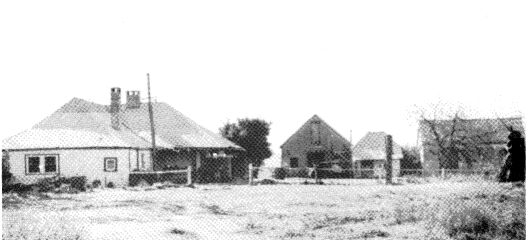
Directly east of the Wesleyan 'sacred acre' that John Lees donated, where we held the meeting, used to be the Crane Brook [now under the Lakes Scheme water] and the farm shown above, which was called Crane Brook farm. In August 1804 James McCarthy was granted 100 acres there, which land he called Crane Brook Farm. The later developed suburb of "Cranebrook" now extends over some of the area which originally was called Castlereagh. James established there the oldest Catholic cemetery in Australia. There are also Byrnes buried in it, but we (who met on the Methodist side of Crane Brook) do not know anything yet about who these Catholic Byrnes were.
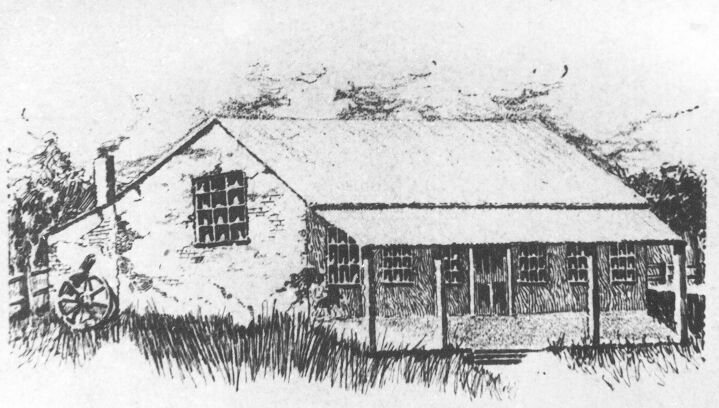 Fulton's academy at Castlereagh, as sketched by William Freame in 1912 from description given by former Penrith Mayor Michael Long and Alfred Colless (no longer standing).
Fulton's academy at Castlereagh, as sketched by William Freame in 1912 from description given by former Penrith Mayor Michael Long and Alfred Colless (no longer standing).
The Castlereagh academy, or 'seminary' as it was also called, was run by Reverend Fulton who buried Ann and who had his parsonage and this academy near the cemetery. This was the first tertiary or advanced place of teaching in Australia. Under Fulton's teaching it produced some well known colonists and the first native born Australian poet of any note, Charles Thompson - Thomson was one of Fulton's best students and his father, Charles senior, had been transported to Australia for stealing books. Charles Thompson jnr published his first and only book of verse in 1826 when he was aged twenty: "Wild Notes from the Lyre of a Native Minstrel". There is a very long poem in the book which tells a lot about early Castlereagh and inter alia laments the beginning of the cutting down of the Castlereagh forest. Portion of that poem runs ... Fair Castlereagh:
I trace thy landscape round,
Each well known spot to me is sacred ground;
In ev'ry mead - in every bow'r or tree,
Some dear companion - some old friend I see:
The myrtle grove that skirts thy sloping sides,
And the tall summit from the plain divides,
The rich acacias waving o'er the rill
That pours its scanty stream beneath the hill;
Thy spreading vale - but here let mem'ry tax
The rude invasions of the spoiling axe,
That chased the dryads from th'affrighted glade,
And lopped each shrub that once composed their shade.
The history of McCarthy's Crane Brook farm may be enquired on from George Luxford, on (02)4730 3308, or email [email protected] -- who may be also contacted about the bicentennary of Crane Brook which is coming up, in August 2004.
ANN REFFIN
Reffin/Ralphin is a very uncommon surname. A list of UK Reffins from the British telephone directory was distributed at the meeting (only 90 Reffins found in UK, and only a handful of Reffins are known in Aus/NZ, or anywhere else). Many appear to be clustered in Leicestershire, around where Ann Reffin was born. Ann's parents were Ann Ward of Barrow upon Soar who married John Ralphon of Cotes in Prestwold on 29 September 1780 (Their first daughter Mary was registered in Prestwold, and second daughter Ann in Walton on the Wolds) [All these varioius places are quite close together]. Earlier on, on 11 October 1715 another Ann Ward married a William Reffin at Woodhouse - so possibly the Reffin and Ward families were well intertwined? The earliest Reffin marriage known is of George Ralphyn who married Mary Bowly at Barrow upon Soar on 26 December 1654.
Thus those who are descended from Ann Reffin can trace back to the Barrow upon Soar area in the late 1700s, and with a bit of assumption back to 1654 as 'likely' or 'possible'. The Reffins today invariably seem to spell the surname as "Reffin" but a common earlier spelling was "Ralphin". In Australia, Ann Reffin's death certificate (fide Pat Curry's book) recorded her as Ann Ralphin or Boyonnes. Seeing many of our early relatives were illiterate and that this is a very rare surname indeed, how could a historically correct spelling appear in the death record. One possible way one can think of is that it was because Ann in Australia had some contact by letters back to England and some of the children who had learned to read and write observed that the family spelled the name as "Ralphin".
Barrow upon Soar is a small residential and industrial township between Leicester and Loughborough. It is pleasantly situated on the east side of the navigable River Soar, and on both sides of the Midland Railway on which it has a station. It is 2 miles N. of Mount Sorrel, 3 miles S.E. of Loughborough , and 9 miles N. of Leicester. The chief industries have been hosiery and knitwear. Boating is also important and the riverbank provides mooring for many houseboats. The emblem of the town is a PLESIOSAURUS, after a fossil found there in 1851:
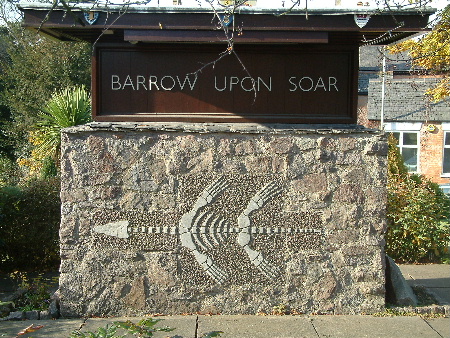
The Anglican parished of Barrow upon Soar and Walton on the Wolds seem to be very closely connected (reason unknown at present). Barrow-upon-Soar gave its name to a Poor Law Union district, and a county court district. It has for ages been celebrated for its excellent limestone. Barrow township comprises about 2510 acres of land and it had 1099 inhabitants in 1801, 1638 in 1831, 1800 in 1861, and 1973 in 1871. The increase between 1861 and 1871 is attributed to the opening of the limeworks. Some of the Reffins worked there. The surrounding parish had 5857 inhabitants in 1871.
Of Reffins contacted in the UK, one found to be keen on following the history of Ann Reffin move to Australia and her descendants here was Mr George T. Reffin, 1 High Street, Catworth, Huntingdon, Cambridgeshire, PE280PF.
We have no drawing of Ann Reffin so do not know what she looked like. Ann arrived on the Experiment in 1804, having been tried in Nottingham for burglary at nearby Ruddington. Her birthplace was Walton on the Wolds (a.k.a. Walton le Wolds) in Leicestershire:
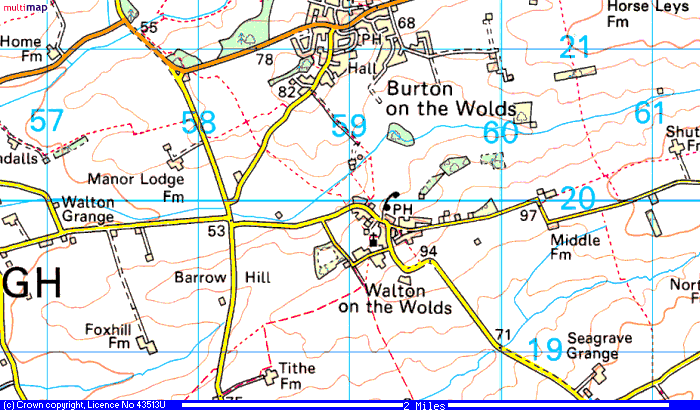
Looking at the above map you can see that the village extends down the northern slope of a ridge which is elongated NNE and that the road veers right through the village and goes across that ridge or crest, southeastwards towards Seagrave Grange. The following five photos show the village coming into view from an eastwards approach, travelling from Barrow. They are an overlapping sequence swinging from left (north) to right (south) and the wooded crest behind the houses is plain in the last two photos.
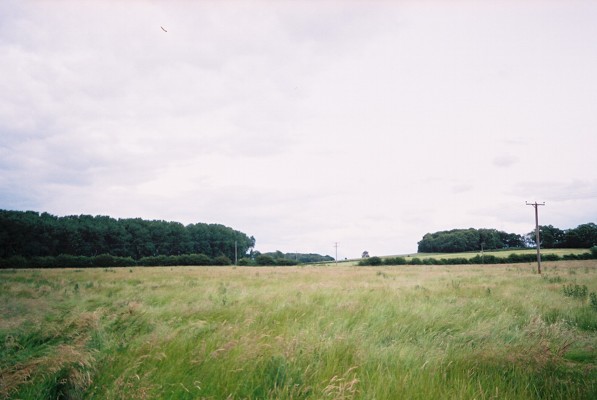
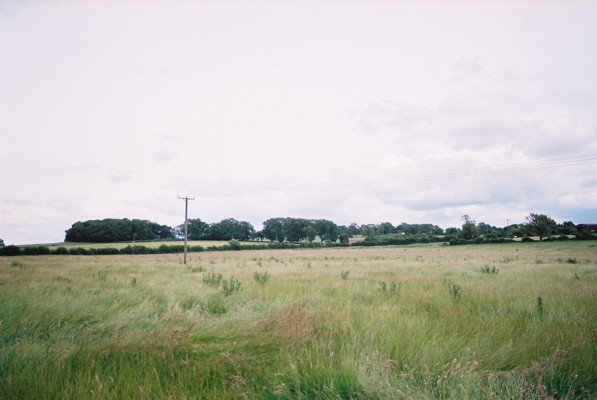
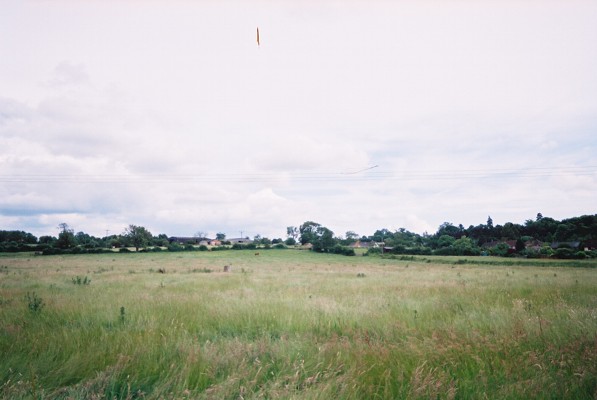
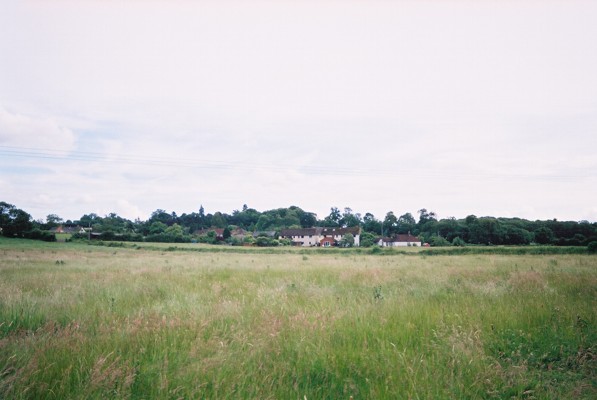
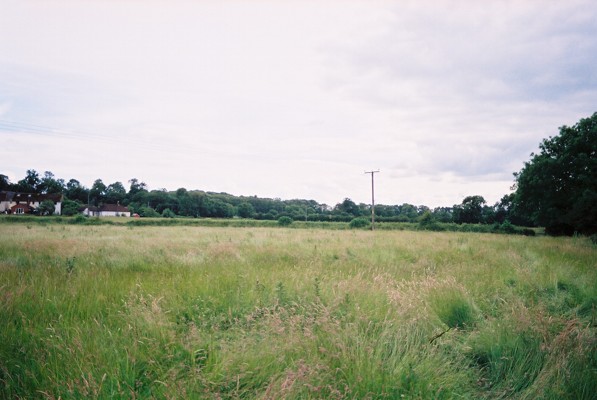
(Photos by JRB in June 2004)
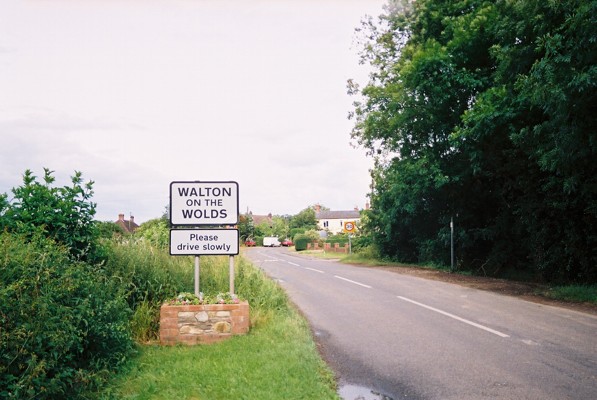
(Photo by JRB in June 2004)
Roadside sign just before entering the village.
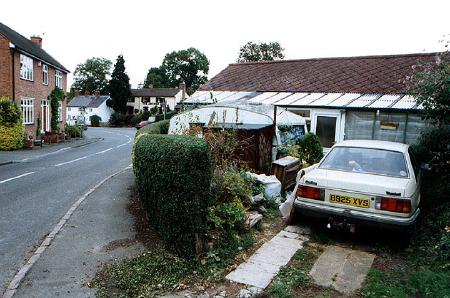
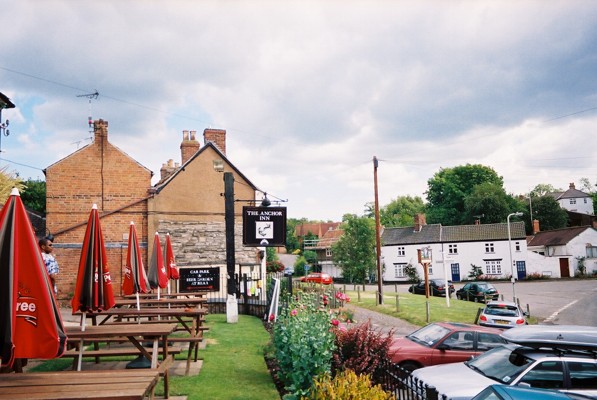
(Photo by JRB in June 2004)
Shows the sign erected in the year 2002 to celebrate the heritage of Walton-on-the-Wold (not the Anchor Inn sign - the sign on the grass to the right of that) and the white row of houses confirmed by owner to date to 1780. So these would have been brand new houses when Ann was born. Could she have lived in one perhaps?


View behind the sign, looking up street to left from above photo. Note old timber frame house.
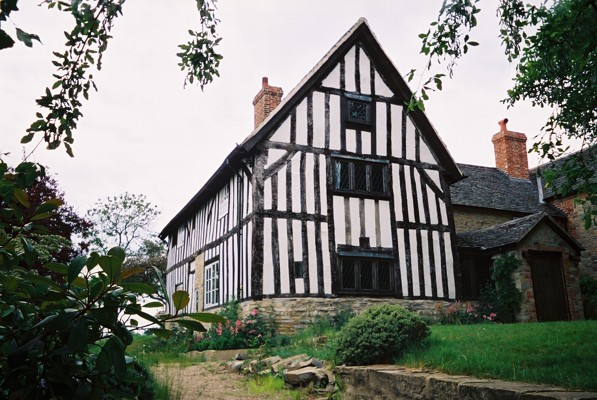
(Photo by JRB in June 2004)
Closer view of the timber framed house. This seems to be the only remaining timber-framed house in the village (assuming that is, that there were more at one stage - perhaps replaced by later brick/stone houses like the 1780 cottages?).
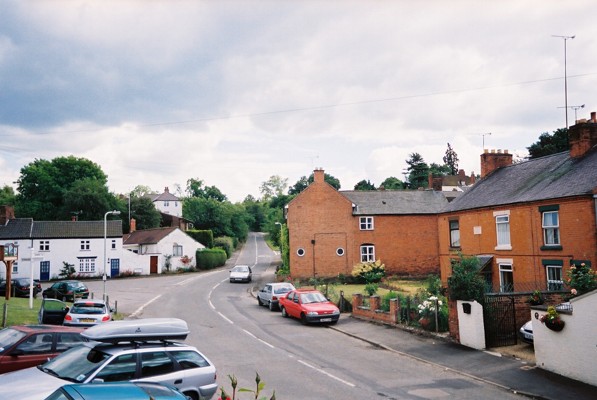
(Photo by JRB in June 2004)
Shows the main road (veering off to the right) leading to the next place, Seagrave Grange. Up this street and second on the right is the St Mary's church and graveyard.
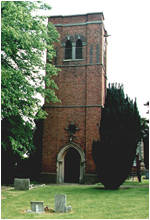 Front entrance of St Marys
Front entrance of St Marys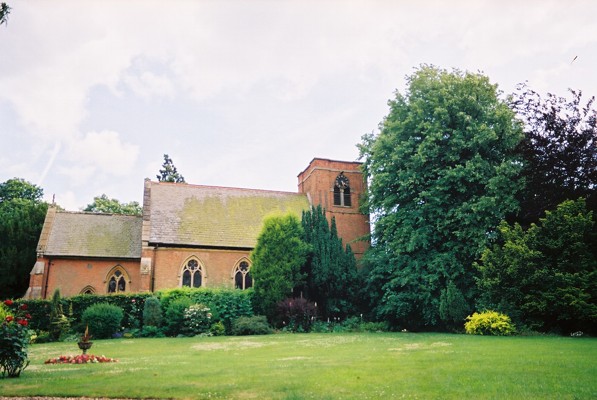
(Photo by JRB in June 2004)
This is St Marys Church (Anglican), taken from the priest's house yard.
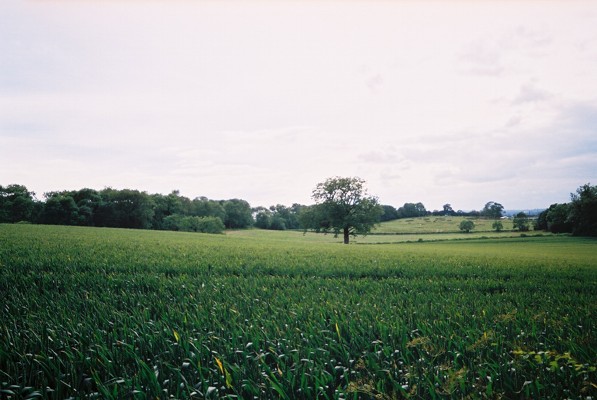
(Photo by JRB in June 2004)
Fields at the back of the church, growing some sort of grain crop (wheat?).
Ann was born in January 1783 and baptised in February 1783 in Walton on the Wolds. She was presumably baptised in the St Marys church shown above as it is the only one around and it is very old.
St Marys Church website is http://www.holytrinitybarrow.org.uk/walton/index.asp
St. Mary's is the sister church of Holy Trinity, Barrow upon Soar. The church as it stands today was built in 1739.
The earliest signs of Christianity in Walton are the remains of the 900 year old preaching cross in the churchyard of St Marys. This was used by travelling priests and probably by the first rector, Hugh Dispenser before the original church was built in 1221.
The earliest memorial dates from 1695 and is very worn, and in that year a bell was hung with the inscription:
"I rouse up sluggards."
The original church, dedicated to St. Bartholomew became
"...so ruinous and decayed, by the general decay of the timber, and the bulging of the wall thereof, that the said church was in such danger of falling that the parishioners could not assemble therein for the public worship of Almighty God, without manifest hazard of their lives."
The old building was demolished and the present church dedicated to St. Mary was completed in 1739. The chancel was built in the same year by Rev. John Bainbrigge, the rector of the parish. The building was restored in 1877 at a cost of £940 6s 11d in the time of Rev. John Bird's ministry (1873-1894). The walls remain as built 1739.
Walton on the Wolds was fortunate in that its rectory was regarded as an exceptionally good living. It attracted many well educated and well connected men who were often given the living as a reward for services rendered or in recognition of their status. Today, however, Walton no longer has its own rector and is joined with the parish of Barrow upon Soar. The rectory is now a private house. Earlier on, the Barrow church was originally the mother church of three chapels, those of St Bartholomews in Quorn, St Marys in Woodhouse and St John the Baptist (later St Peters) in Mountsorrel.
The Church and graveyard are maintained by villagers and the bells are often rung by local teams.
[Information is from: "St. Mary's Church Walton-le-Wolds - A Brief History". Compiled by Lexie Clarke of Walton].
Ann convicted and transported:
At a young age Ann committed a burglary at Ruddington, was transported to Sydney, and married David Burns/Byrnes from Ireland. Both Ann and David now lie buried at Castlereagh (near Penrith at the foot of the Blue Mountains west of Sydney, NSW, Australia).
To quote from Patricia Curry's "A Byrnes Book 1800-2000", Ann Reffin was put aboard the Experiment, a ship of 568 tons, which left England for Port Jackson on 4 December, 1803, under the control of Master Francis J. Withers. There were 2 male and 136 female convicts on board. There were 6 females who had died, and 21 prisoners sick, when the ship finally landed in Sydney. Also on the same voyage was Molly Morgan, a convict who is rather famous for having managed an illicit return to the motherland (very rarely achieved) and also because she is regarded as a prime founder of the City of (West) Maitland which grew up upon the site of Molly's farm (Molly had become a trustee convict and businesswoman; and the unofficial non-dollar currency for Maitland today is "mollies").
Upon arrival in Sydney, Ann Reffin and the other female prisoners most likely would have been sent to the Female Factory in Parramatta. The Colonial Muster for 1806 showed she was living with David Burns and bore a son in 1806. David and Ann married in 1810 after the Governor, Colonel Lachlan Macquarie issued a statement to improve the morals of the people, urging marriage for convicts who were co-habiting and raising children. There is no record of birth or christening having been registered for James. The next child, Ann Byrnes, was born in 1810 and baptised in 1811. Four more children were born, up to 1826. The family resided during this time at Parramatta with offspring moved Greendale-Bringelly in the upper Nepean Valley. Then in 1838 almost the entirely family relocated to Castlereagh further down the Nepean River (near the later developed town of Penrith).
David Burns (1768-1848) had arrived in Sydney as a convict from Ireland on the Friendship in 1800. Little is known of his life before coming to New South Wales except that he had a wife and six children. In 1795, he joined the Londonderry Militia, but soon afterwards became a deserter. The reasons for his transportation are uncertain but he arrived on a ship loaded with exiles sent to Australia after the 1798 revolution (the United Irish uprising).
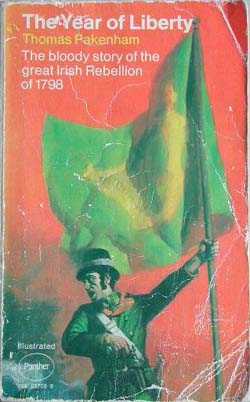
It was in the "Year of Liberty" 1798 that David appears to have been tried in Dublin, on 22nd October, as suspected (or informed against?) as taking the United Irishmen oaths (viz. the book "A Byrnes Book 1800-2000" by Patricia Curry which cites the Index to convict indents, AONSW references Sydney; COD 131-133 as the source for this information).
In Anne-Marie Whitaker's 1994 book "Unfinished revolution: United Irishmen in New South Wales 1800-1810" there is note of the convict transport ship "Atlas" (Atlas 1) which arrived at Sydney Cove in June 1802 after a 220 days voyage from Cork. Some 63 men and 2 women had died at sea. Most of them were United Irishmen. On 29 October 1802 the second Atlas (Atlas 2) was sighted off the Heads. On Atlas 2 a total of 190 reached Sydney fit and ready for work. Of these 76 were classed as United Irishmen, 114 as political offenders and 4 as criminal offenders. The ship's captain, Captain Musgrave is recorded to have commented that: "... Reading the charge sheet impartially, these men, for a political view contrary to that of the authorities, a view that I do not claim to understand, were being transported, therefore I could not recommend nor condemn the views of either the United Irishmen or the Authorities."
From at least 1806, Ann and David lived
together at Parramatta and David was a Petty Constable there. Most of their
children are known to have been born in Parramatta and baptized at St Johnís
Church of England. It was at that church too that David and Ann were married
in 1810. David is thought to have received land in Parramatta from Governor
King in 1805. Later, from 1823 to 1839, he held a lease on land in Campbell
Street, Parramatta.
Sometime during the late 1830s, in or about 1838,
David and Ann moved to Castlereagh, where their son James Byrnes was then
resident. James is thought to have leased land near Birdís Eye Corner. David
and Annís son John and his family, and daughter Catherine and her husband,
also lived in Castlereagh
David and Ann died at Castlereagh and are
buried in Christ Church Anglican Cemetery in Church St, Castlereagh. The
graves of their children James (with headstone) and Catherine, and of some
grand-children, are also located there.
Some members of David and
Annís family appear to have been closely associated with early development of
the Methodist Church in Castlereagh and Penrith. Their son Samuel Byrnes
married Eliza Gorman, grand-daughter of 1804 Nepean land-grantee and
ex-soldier John Lees. As discussed by Merle Kavanagh in her 1987 book John
Lees, The Chapel Builder, Lees built the first Wesleyan Chapel in Australia at
Castlereagh in 1817 and donated its site. David & Annís daughter-in-law
Harriet was strongly involved in Wesleyan activities, and their sons James and
Samuel became trustees of the Methodist Church at Castlereagh in 1847. The
headstones of Samuel Byrnes & his sister Ann, as well as the grave of his
wife Eliza Gorman, are located in the cemetery of the Castlereagh Methodist
Church.
David Burns lived to 80, his son Samuel to 89, and two of
Samuelís children, Maria & William, to 88 and 94 years of age
respectively. Samuel, had 13 children, all born at Castlereagh. Many of his
children and 96 grandchildren married members of early settler families in the
area. Similarly all 8 children of his older brother John were born at
Castlereagh. And his sisterís son John Jackson lived there with his family in
Jacksonís Lane.
Children of David and Ann
James (1806-96)
Married Harriet Nicholson
Ann (1810-79)
Married (1) William
Jackson;
and (2) Thomas Harland
John (1818-88)
Married
Elizabeth Ablett
Esther (1814-96)
Married John Wilkinson
Catherine Sophia (1819-38)
Married William Harris
Samuel
(1826 Ė 1917)
Married (1) Eliza Lewis;
(2) Eliza Gorman; and
(3)
Ellen Nicholas (nee Shaw)
Or in a better format and courtesy of Patricia Curry from her "A Byrnes Book 1800-2000" this link is to a more fully detailed DESCENDANT CHART for David and Ann's children and grandchildren.
Records of David and Ann and their children
use various spellings of their surname: For Ann (or Nancy), Ralphin, Riffin,
Griffin & Ruffian were some variants. And, at burial, her surname was
recorded as Boyonnes. The surname of the family was variously recorded early
as Byrns, Burn, Burne, Burns or Byrnes. But Byrnes was the spelling that later
came to be used consistently.
SOME LINKED FAMILIES
Families linked with David and Annís children: Nicholson, Jackson,
Harland, Ablett, Wilkinson, Harris, Lewis (and hence Fredericks), Gorman (and
hence Lees), and Nicholas.
Families linked with David and Annís
grand-children: Yeomans, Smith, Becroft, Wilkinson, Johnson, Cunningham, Ford,
Dunbar, McCooey, Hamilton, Dyson, Quinn, Price, Harland, Fraser, Irwin,
Wright, Dowling, Sheens, Lovell, Pullman, Hollier, Innes, Cummins, Haynes,
Kirkness, and Stokes.
Families linked with some of David and Annís
great-grand-children (those who are descendants of their youngest son, Samuel
Byrnes): Vaughan, Boulton, Flanagan, Parish, Richardson, McLenehan, Ness,
Alfred, Hall, Mann, Dunstan, Handley, Nixon, Willett, Stanton, Collins,
Ahleman, Anderson, Millen, Lenthall, Matthews, Downey, Gates, Forrester,
Witcom, Lack, Hindmarsh, Viant and Miller. Also: Curry, Walker, Payne, Taylor,
rightwell, Grant, Taylor, Bunyan, Winchester, Kendall, Upton, Weir, Cassidy,
Kay, Clarke, Seach, Edgar, Gilbert, Rapley, East, Mason, Graham, Pond,
Guthrie, Leschke, Woodleigh, Beecroft, Lines, Stonehouse, Seymour, Smith,
Wilson, Tuckwell, Ahleman, Andrews, Bayliss, Grimmond, Kingsmill, Rose, Boots,
Harvey, Webb, Piper, Allan, Curry, Andrews, Mosse-Robinson and Hair.
,,, The Castlereagh families are intertwined back and forth over the
passage of time.
